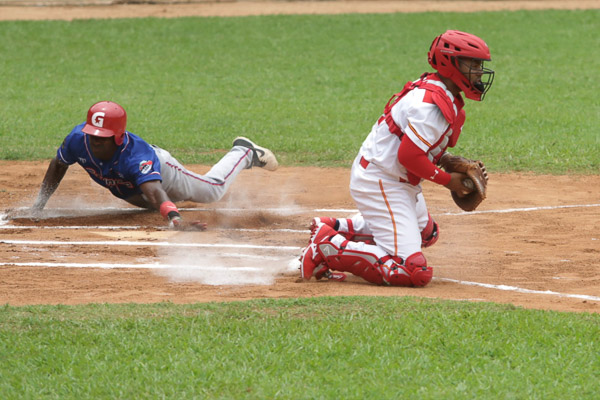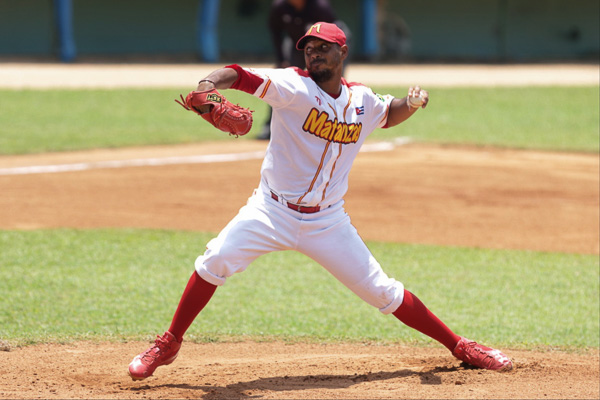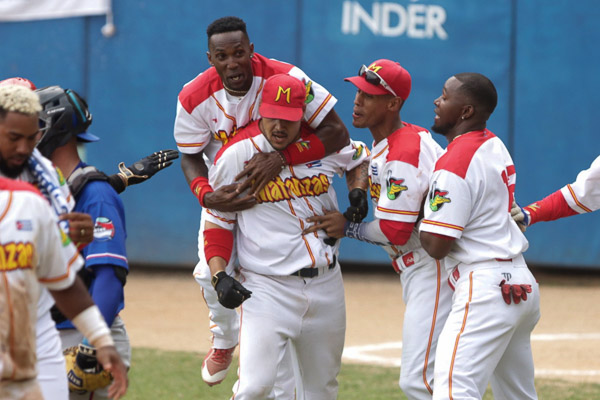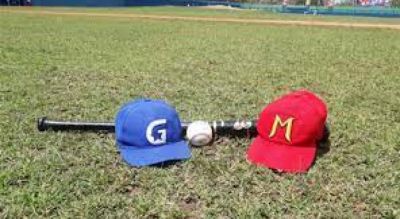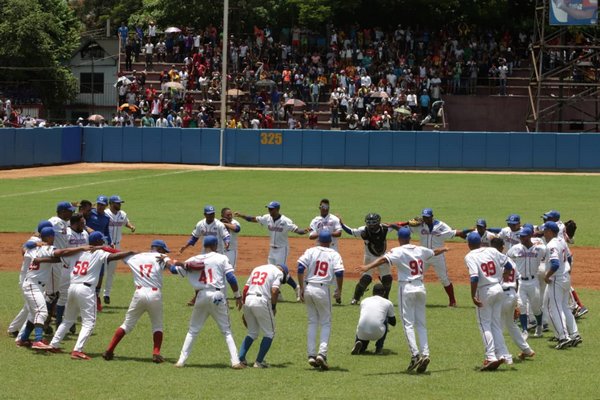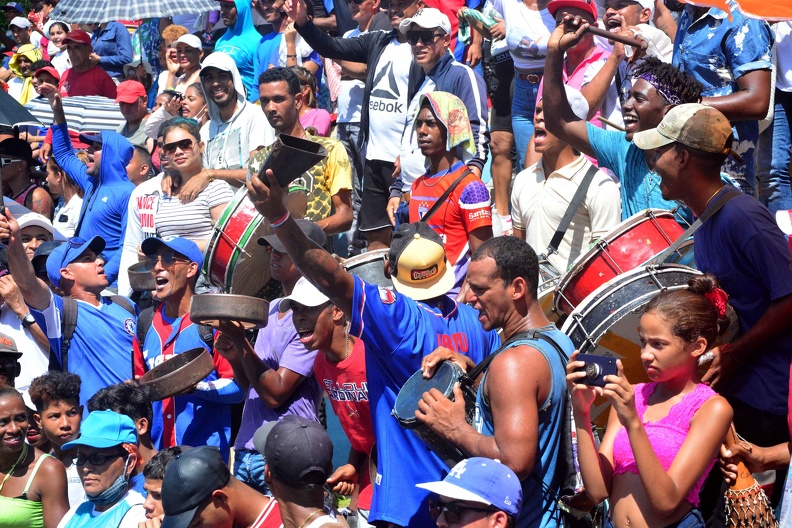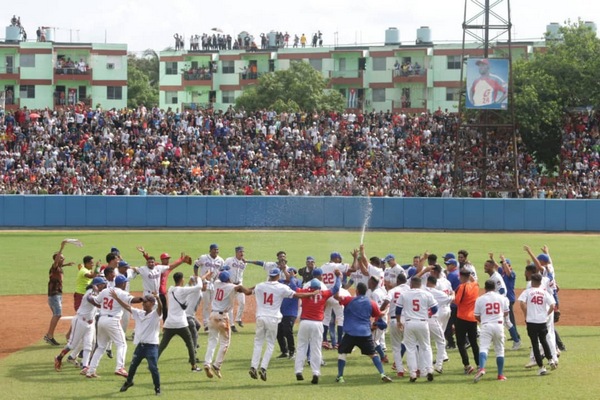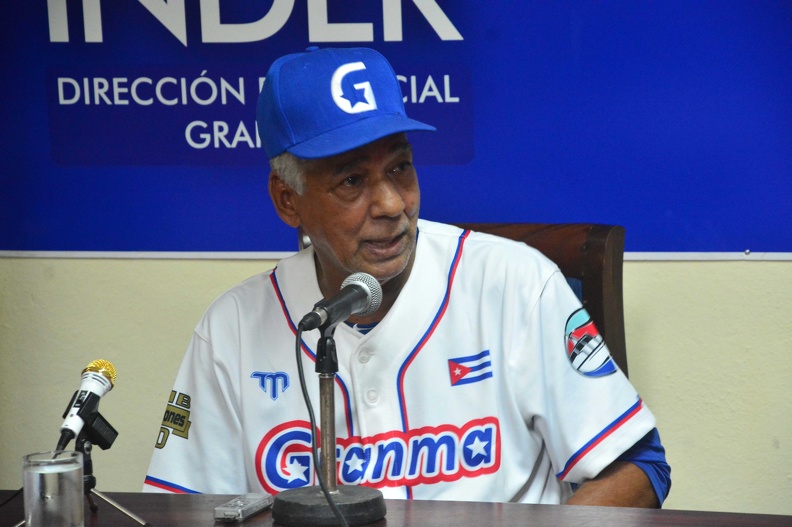6673
by joez
Baseball’s Best Young Hitter and Pitcher Play in Japan
Munetaka Murakami and Roki Sasaki are rewriting the NPB record books in their early 20s—and inspiring dreams of how great they could get
By Ben Lindbergh on September 15, 2022 6:30 am
More so than most seasons, the 2022 MLB campaign is a congeries of remarkable individual exploits. Aaron Judge is aiming for 60-plus homers and lapping both leagues in long balls. Shohei Ohtani is performing weekly two-way wonders for the second straight year. Judge and Paul Goldschmidt are contending for Triple Crowns. Albert Pujols, on the path to 700 homers, looks like his old—scratch that, young self, and Justin Verlander is angling for the lowest ERA by a qualified, 36-and-up AL/NL starter not named Cy Young. On the opposite end of the experience spectrum, four rookie position players—Julio Rodríguez, Adley Rutschman, Michael Harris II, and Steven Kwan—have cleared the four-bWAR threshold, tied for the most ever; Jeremy Peña may make it a record five. (In that event, one more strong start by Spencer Strider would bring the combined pitcher-plus-position-player total of four-WAR rookies to six, the most since 1934.) Almost every major end-of-season awards race will feature a runner-up who would win handily in many other years.
Which makes it all the more amazing that the year’s most sensational statistical feats might not come from the majors—the American majors, at least. Japan’s major leagues, known as Nippon Professional Baseball, are home to two phenoms whose accomplishments and projections compare favorably to any of their Stateside contemporaries’. Munetaka Murakami, third baseman for the Central League’s Yakult Swallows, is leading in every Triple Crown category and matching Judge homer for homer as he nears Japan’s single-season home run record. Roki Sasaki, starting pitcher for the Pacific League’s Chiba Lotte Marines, almost pitched back-to-back perfect games in April—he was pulled eight innings into the second perfect start, having retired a record 52 consecutive batters—and has exhibited unprecedented per-batter dominance overall. Going by performance relative to their leagues, Murakami is approximately peak Barry Bonds, and Sasaki is approximately peak Pedro Martínez. They’re having two of the best seasons in the nearly 90-year history of Japanese professional leagues—and they’re doing it at ridiculously early ages.
Murakami is 22 and Sasaki is 20. Their combinations of precocious skills and unparalleled production have, in the judgment of journalist Jim Allen, raised the excitement surrounding them to levels unmatched by any of the recent Japanese superstars who’ve subsequently strutted their stuff in the States. “Nobody their age has ever done anything like what they’ve done, so expectations and hype [are] through the roof,” reports Allen, who has covered Japanese baseball since the early 1990s. No league or continent qualifiers are necessary: Murakami and Sasaki are the best young hitter and pitcher, respectively, in the world. “You’re spot on with your focus on the two of them as elite under-23 players,” says a scouting director for an MLB team. “It’s so exciting to see what they’re doing.”
In breaking down what this duo have done, let’s start with Murakami, because as incredible as Sasaki has been, Murakami’s season has no equal this side of Sadaharu Oh (who holds the career home run record of 868). Put it this way: Murakami, a 2017 first-round draft pick and the 2019 Central League Rookie of the Year, won the Central League MVP award last year, when he hit .278/.408/.566 with 39 homers, played in all 143 of Yakult’s games, and posted a 167 wRC+ and 6.5 WAR (per the website NPB Stats). Yet he’s on track to be about 75 percent more valuable this year.
Murakami, who in high school was called “Higo’s Babe Ruth”—“Higo” being the former name of Kumamoto prefecture, where he was born—has posted a stat line this season that resembles Ruth’s best. The headline is that he’s hit 55 home runs, vaulting him into a four-way tie for second place on the NPB single-season leaderboard with Oh (1964), Tuffy Rhodes (2001), and Alex Cabrera (2002). Only Wladimir Balentien, who hit 60 for Murakami’s club, the Swallows, in 2013, stands above him. Murakami is on pace to break Balentien’s record, and he needs only one dinger to top Oh’s record for a Japanese-born player. As it is, his homer total matches his jersey number, which he was given when he joined the Swallows in honor of Oh’s record and of Hideki Matsui, who before Murakami was the most recent Japanese-born player to hit 50.
Murakami, who has earned a new nickname this year—Murakami-sama, or “Mura-god”—has already set some records: He became the youngest NPB player to hit 40 homers (surpassing Oh and fellow Hall of Famer Koji Akiyama) and the first to go deep in five consecutive plate appearances. And while the shorter NPB season may prevent Murakami from hitting as many homers as Judge—even though he’s proved durable again, missing only one contest—he has outpaced Judge’s tally through the same number of player games.
Like Judge, who boasts the highest single-season wRC+ by a qualified hitter since Bonds, Murakami isn’t just a homer machine; he’s an extremely well-rounded offensive player, as evidenced by his .337/.472/.761 slash line in 551 plate appearances (with 12 stolen bases to boot) and his August on-base streak of 14 consecutive plate appearances, one shy of the NPB record. Also like Judge, he’s head and shoulders above the next-biggest home run threats—though at 6-foot-2, not as literally. Hotaka Yamakawa of the Pacific League’s Seibu Lions is second in NPB with 39 round-trippers, but Murakami’s closest “competitor” in the Central League has 27, less than half of Mura-god’s total. By OPS, the closest qualified hitter is more than 250 points south.
Unsurprisingly, Murakami blisters the ball, another thing he has in common with Judge. Per DeltaGraphs, no NPB player with at least 200 plate appearances has a higher hard-hit rate, and his homers typically clear the wall with plenty of real estate to spare. “I can’t recall a single one where I’ve gone, ‘Oh man, is that going to be a homer? Oh, it just snuck out,’” says Swallows starter Cy Sneed, who joined Murakami’s team last year after pitching for the Astros from 2019 to 2020. “It’s like, ‘Oh, that ball’s absolutely crushed. How far is it going to go?’” According to team batted-ball data accessed by Sneed, Murakami hit a homer on August 26 that left his bat at 193 kilometers per hour, or 119.9 miles per hour. Since Statcast started tracking batted balls in MLB in 2015, only Giancarlo Stanton (in 2018 and 2020) and Judge (in 2017) have hit homers that hard. Granted, NPB’s TrackMan system may produce slightly different readings from Statcast, but Murakami’s dinger appeared totally tattooed.
While Oh and Matsui pulled most of their long balls—as do most prolific home run hitters—the left-handed Murakami has launched more than half of his homers to left or center. The oppo shot he hit for his 55th is indicative of his huge power to all fields, as shown in this spray chart from DeltaGraphs.
“We play in a pretty small ballpark,” Sneed says. “It doesn’t matter for him.” That checks out. Meiji Jingu Stadium, the home of the Swallows, is the homer-happiest park in NPB, but Murakawa has hit 33 of his 55 homers on the road—including seven in 44 plate appearances (and 36 at-bats) at the Chunichi Dragons’ Nagoya Dome, the least homer-friendly NPB park.
Murakami’s excellence to all fields is mirrored in his excellence against all pitch types. According to DeltaGraphs, Murakami leads qualified NPB hitters in per-pitch production against four-seamers, sliders, splitters, and cutters, while rating well above average against sinkers, curves, and changeups. Nor does he have a weak spot in or around the strike zone. As Sneed says, “I always look for, Does a guy have a hole? Does he struggle with something in, does he struggle with spin in a certain spot? … And I haven’t seen one. … It’s not like he’s just hitting the ball up or he’s just hitting the ball down or whatever, he’s covered everything. … Lefty, righty, a guy that throws soft, a guy that throws hard.” It’s true: Murakami’s heat map (displaying runs above average per 100 pitches) is red virtually everywhere. Mura-god indeed.
“What’s impressive to me is he’s doing what he’s doing in big spots against really, really good arms here,” Sneed says, citing an oppo taco Murakami hit off one of the top pitchers in Japan—and “a legit MLB arm”—SoftBank Hawks ace Kodai Senga (who’ll probably become an actual MLB arm next season). “He’s not doing it against the guy who’s mopping up in the seventh in a lopsided game. He’s doing it against dudes.” Sneed knows what he would do if he were one of the dudes who had to face his slugging teammate. “If I was pitching against him, I joke with guys on the team that I would, from the mound, be saying, ‘Hey, put him on, four [balls], put him on,’” he says. “Because there’s not a safe place to go to him.”
What makes Murakami’s monster season even more astounding is that—despite the best efforts of Murakami himself—offense is significantly down in Japan. No one knows why, but suspicions about the ball abound; the league says the ball hasn’t changed (though the packaging has), but NPB secretary general Atsushi Ihara has a history of secretly tampering with the pill’s construction. Whatever the cause(s), leaguewide OPS in the Central League is down 19 points since last season, 35 points since 2020, and 51 points since 2018. If NPB’s ball, like MLB’s ball, has been deadened, it hasn’t seemed to bother Murakami, and he’s only heated up as the season has gone on. In June, he hit .410/.515/.940 with 14 bombs; in August, he slashed .440/.588/.987 with a dozen dongs. Murakami’s 10-game rolling wRC+ chart looks like the heart rate of everyone who’s watched him. “The spotlight has grown brighter and brighter, because he really hasn’t slowed down,” says Jason Coskrey, who covers Japanese baseball for The Japan Times. Neither has his team: At 73-53-2, the Swallows sport NPB’s best record by a wide margin.
Yii
All told, Murakami has posted a 243 wRC+, according to NPB Stats, which is tied with Oh’s 1970 season for third all time among qualified hitters—behind only Oh’s 1973 (255) and Oh’s 1966 (245). (For reference, Bonds’s 244 in 2002 is the highest in MLB history.) Murakami’s 10.3 WAR (which dwarfs 2022 also-ran Yamakawa’s 5.9) puts him on pace for 11.5, which would vault him into a tie for fifth all time—and some of the seasons in the same vicinity came before NPB ascended to its current standing as the strongest league outside of MLB. (“My research suggests that Japan didn’t reach its current [AAA-AAA+] level of play until the mid-1960s,” says analyst Eric Chalek.) According to FanGraphs’ Dan Szymborski, Murakami’s 2022 NPB output is the equivalent of a .273/.355/.574 line with 45 homers in MLB, which would tie him for fourth among qualified hitters in OPS and slot him comfortably behind Judge in the home run pecking order. “You couldn’t craft a better middle-of-the-order hitter,” Sneed says.
Notwithstanding his age, it doesn’t seem like there’s a lot left for Murakami to work on, though Sneed describes him as an upbeat, team-first type who always works hard. (“He’s there when I get there; he’s there when I leave.”) The only knock on him is that he’s a bat-first player—though it would be tough not to be a bat-first player with a bat like that. Sneed describes him as a “serviceable” third baseman who has a “pretty decent arm” and “does a fine job over there” but who’s “not going to win a Gold Glove or anything.” (DeltaGraphs’ UZR figure rates him almost exactly league average.)
One scout for an MLB team, who praises Murakami as “the total package at the plate,” says, “the question will be if he can stay at third base. He is more [Yoshi] Tsutsugo than Seiya Suzuki athlete/body type-wise, but the bat is easily ahead of both of those guys at this stage of his career. I think he could be playable in left field or profile as a bat-first third baseman in the vein of a Rafael Devers.”
Because he’s not a great glove at a premium position, Murakami doesn’t quite boast the best MLB WAR projection of any player under 23. Szymborski’s ZiPS projections put Wander Franco and Julio Rodríguez ahead of him in projected five-year WAR, though Murakami edges out other highly touted rookies such as Gunnar Henderson, Bobby Witt Jr., Nolan Gorman, Michael Harris II, and Riley Greene. But both the ZiPS and Oliver projection systems peg Murakami as the best hitter in the world under 23. Oh told The Asahi Shimbun that Murakami is “in a class of his own among today’s young players.” The legendary slugger was talking about NPB players, but bat-wise, Murakami is in his own class among any league’s young players.
“Not very long ago, Ohtani was here,” Sneed says. “That guy’s pretty good. And he wasn’t doing this.”
Admittedly, Murakami doesn’t pitch. That’s where Roki Sasaki comes in.
“Murakami is such a complete hitter … and Sasaki is just absurd,” says the MLB scouting director. “His arm was special in high school, but he was just a lean, athletic kid from the middle of nowhere in the countryside, and just figuring stuff out on his own. So for him to develop command of a full arsenal of wipeout pitches as quickly as he did … I just don’t even know. What if he keeps getting better? I don’t know what the limit is, but I can’t wait to see how far it goes.”i
Sasaki didn’t go quite far enough to top Johnny Vander Meer and seal a second straight perfecto on April 17: His manager, former NPB/MLB player Tadahito Iguchi, pulled him after 102 pitches with one inning to go so as not to overtax his arm. However, Sasaki struck out an NPB-record 19 batters in the complete perfect game—the first in NPB since 1994—including a world-record 13 in a row. Had he posted the same line in MLB, he would have been rewarded with a 106 Game Score, the highest ever. Working with an 18-year-old catcher, he threw almost exclusively fastballs and splitters (labeled as forkballs by some sources). His heater averaged roughly 99.5 mph, with some serious movement.
8
Sasaki, who at an early age lost his father, his grandparents, and his home in the fallout from the Great East Japan Earthquake, went on to earn his own high school nickname (“The Monster of the Reiwa”) and break Ohtani’s high school pitch-speed record by touching 163 km/h (101.3 mph). Although MLB teams hoped to convince him to bypass NPB, he decided to stay, was drafted first overall in 2019, and signed with the Marines. In 2020, he didn’t pitch, a continuation of his high school coach’s prudent, measured use of his arm at a formative time, which broke with hard-driving tradition. Last year, the teenaged Sasaki made 11 appearances for Chiba Lotte, recording a 2.27 ERA with more than a strikeout per inning and more than four strikeouts per walk. That set the stage for a full unveiling in 2022.
“This was supposed to be the year we really saw Sasaki in the rotation for a full season, so the hype around him was already kind of like it was for Stephen Strasburg’s debut back in the day in MLB, and when Shohei Ohtani, already playing as an outfielder, started pitching for the Fighters,” Coskrey says. “Then he threw the perfect game and everything went through the roof. I think Sasaki definitely surpassed Ohtani for a brief period, especially with him coming so close to another perfect game in his next start.”
Sasaki didn’t maintain his perfect pace, but he hasn’t fallen far from it: In 123 1/3 innings, he’s dealt to the tune of a 2.04 ERA and a 1.64 FIP, pitching his home games in one of the two NPB parks that inflates scoring more than the Swallows’. Although the Marines have limited his workload—his perfect outings are the only ones this year in which his pitch count has hit triple digits—his rate stats are unsurpassed. Per NPB Stats, his strikeout rate (36.1 percent), K-BB rate (31.8), WHIP (0.795), and park-adjusted FIP (45, where 100 is average and lower is better) are all the best in NPB history for a starter with at least 100 innings accumulated. (Pedro’s FIP- from 1999 through 2003: 45; Jacob deGrom’s since 2018: 50.) According to DeltaGraphs, his four-seamer has averaged 98.4 mph (nearly 2 1/2 mph faster than second-place Senga’s), and his slider and curve are also fastest in class. He trails 24-year-old Orix Buffaloes ace Yoshinobu Yamamoto—the only regular starter who has a speedier splitter—for the NPB WAR lead by barely half a win, even though the also-elite Yamamoto has thrown almost 50 more frames.
Sasaki “has electric stuff,” the MLB scout says, saluting his “easy 100 mph fastball with the best forkball in Japan” and “advanced fastball command.” Sneed, scout, and stats alike say that Sasaki’s curve and slider, which he’s thrown a combined 10 percent of the time, are still works in progress, as are (the scout adds) “some of the subtleties of the position, such as holding runners and fielding his position.” But, the scout concludes, “if he keeps progressing, he will be the highest-ceiling pitcher to come out of Japan since Darvish and Ohtani.”
ZiPS is unequivocal: Sasaki projects to be by far the best of the thin crop of current under-23 pitchers over the next five years.
ZiPS-Projected 5-Year WAR, Under-23 Pitchers
NAME WAR
NAME WAR
Roki Sasaki 18.5
Grayson Rodriguez 10.4
Hunter Greene 10.1
Kyle Harrison 9.8
Matthew Liberatore 8.9
Reese Olson 8.6
Reid Detmers 8.5
Eury Pérez 8.5
Taj Bradley 7.9
Joey Cantillo 7.6
“Japan’s majors are not as deep as America’s for a variety of reasons,” Allen says, “but that is no proof that the best player in Japan can’t also be the best player in the world. It’s just harder to compare them.” Murakami and Sasaki are so superlative, though, that their overseas counterparts are the ones who suffer from the comparison.
Last year, Sasaki surrendered his first pro home run to—who else?—Murakami:
In their next matchup, later in the same game, Sasaki seized the upper hand with a swinging strikeout:
That thrust and counter may have marked the start of decades of one-upmanship. In this year’s All-Star Game, the two tangled again, and Murakami singled off Sasaki. The two players smiled: Game recognized game, as historic seasons intersected like ZiPS passing in the night.
The obligatory question, of course, is when those ships could cross the Pacific and meet in the American majors. The unavoidable answer is that it’s going to take a while, a consequence of the two players’ youth.
To qualify as an international free agent—which the 29-year-old Senga could become this winter—an NPB player needs nine years of service, which Murakami and Sasaki are nowhere near. What’s more, MLB’s CBA dictates that international players who are younger than 25 or have less than six years of service are subject to the international bonus pool system. Even if Murakami or Sasaki could convince their NPB teams to post them before they clear those thresholds, the players would make a tiny fraction of what they’re worth, as Ohtani did when he signed with the Angels before his age-23 season. Moreover, their NPB teams would receive meager compensation for letting them go. In other words, Murakami and Sasaki are NPB players for the long haul.
How long? Although Sasaki’s status as a coveted draftee likely gave him the leverage to work out an arrangement whereby Chiba Lotte would post him when he wants to go, Allen estimates that Sasaki won’t enter MLB until 2027, a few months after his 25th birthday. He envisions Murakami crossing over at the same time, as he embarks on his age-27 season (like Seiya Suzuki this year). Coskrey says he could see Murakami making the leap sooner, in the next three to four seasons, though he also expects Sasaki’s transition to take five or six. So, settle in for a protracted wait.
But don’t sleep on Sasaki and Murakami until then. Baseball excellence doesn’t have to happen here for it to wow us. It should be blowing us away today, even as Judge and Ohtani turn our heads at home.
In Japan, Murakami and Sasaki are making heads spin. But they’re also changing minds—and, perhaps, reflecting shifts in training and development that have already begun. “I think they are proof of changes in Japan opening up to children’s potential more and letting their talent flow rather than trying to sculpt it into its final form at a young age,” Allen says. “There is more knowledge about weight training, nutrition, and rest, and more coaches willing to protect young stars and not turn them off baseball by being 20th-century-throwback hard-asses.” Sasaki, who’s been handled with conspicuous care by both his high school and NPB teams—with his participation and support—has become a case study in how to take the long view with a promising pitcher in a nation where young arms have often been abused. “The Japanese game is more cognizant of pitchers’ health and development than before,” says Coskrey, who also credits Yu Darvish for spreading this gospel. If that patience pays off, generations of pitchers could reap the rewards. (Unless the main lesson learned from Sasaki is that it helps to throw really hard.)
Meanwhile, the Swallows (led by manager and former NPB/MLB player Shingo Takatsu) have encouraged Murakami to let it eat. Sneed notes that in NPB, “Everybody’s not trying to do damage like they are in the States.” There’s more small ball, and more hitters prioritize putting the ball in play, which leads to less power and fewer strikeouts. Murakami is far from an all-or-nothing hitter, but he does swing for the fences—all of the fences. “He’s the outlier here,” Sneed says. “He has more of the American-style approach, trying to drive the ball at all times.”
And in contravention of collectivist-cliché norms, the stars have sometimes talked the talk after making fans gawk and supplying the sock. Although Allen says that both Sasaki and Murakami “have been frequent visitors to the ‘I’m glad the team won, this isn’t about me’ neighborhood,” Coskrey notes that “neither has really downplayed what they are doing,” adding that Murakami “is pretty confident and it’s not hard to see.” In his August 2 “hero interview”—a term for the postgame, sideline debrief that MLB should adopt—Murakami admitted, “I thought it would be cool if I hit five in a row, so I went up looking for a home run.” He has also acknowledged that he’s hoping to set the single-season record and win the Triple Crown. “I think there definitely is a lot of that, ‘We’re all pulling together on the same rope’ kind of thing,” Sneed says. “But I also think at the same time, the best way for him to pull on the rope is to hit 60 homers.”
Not much rope remains in the 143-game season, so board the bandwagon now. Maybe Murakami and Sasaki are the future of NPB and MLB. But their present is pretty special too.
Thanks to Dan Szymborski, Kazuto Yamazaki, and Brian Cartwright for research assistance.
“Every day is a new opportunity. You can build on yesterday's success or put its failures behind and start over again. That's the way life is, with a new game every day, and that's the way baseball is.”
-- Bob Feller
Democracy Dies In Darkness - WAPO

